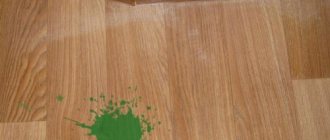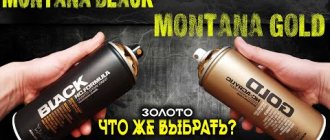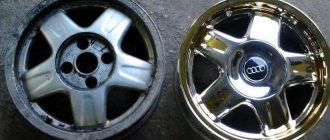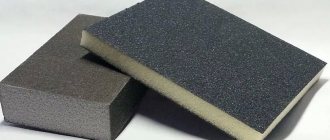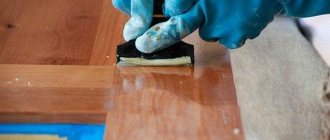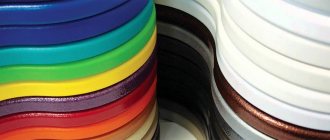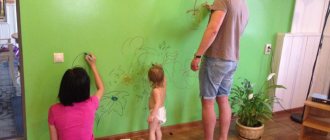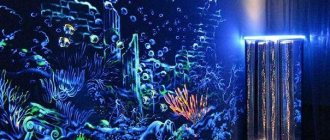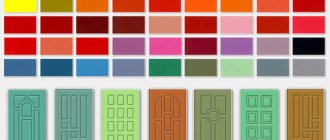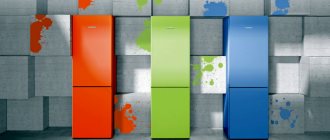To paint a large surface area (fence, gate or house facade) you need to have a large volume of painting material. Information on how to make acrylic paint at home will help save the family budget and reduce the cost of purchasing it.
Homemade acrylic water-based paint uses readily available materials. Its technical characteristics are not inferior to industrial acrylics.
Basic recipe
Components:
- Acrylic dispersion;
- Coloring element - pigment;
- Water.
The pigment substance and water are mixed to a paste-like state. The paste is mixed with acrylic dispersion until smooth. The consistency is adjusted by adding liquid. The dye is ready. Adding various ingredients gives it additional qualities. Additives can be antifreeze, fire retardant, thickeners. Thanks to them, the CM becomes frost-resistant, not afraid of fire, and wear-resistant.
Flour paint
If we talk about what paint for painting can be made from, it is flour. If you prepare a composition that is based on wheat flour, the result can be a very good paint that will work well with many brushes.
Such compositions turn out to be very durable, while maintaining elasticity well throughout the entire working distance. They are well suited not only for canvas, but also for decorative painting of fences and other exterior details.
To prepare it you need to take one glass of flour. As mentioned earlier, wheat is best suited. In addition to all this, you will need another half liter of water, into which you will need to pour flour and clay, in a ratio of one to one.
Read here: Alsatian apple pie: a simple recipe with photos and descriptions
When both powders fall into water, they must be stirred, after which the entire resulting mixture must be stirred until a homogeneous consistency is obtained, and to achieve this, it would be good to add mica, in a crushed state, in the volume of half a glass, which was used to measure clay and flour.
Next you will need to add the dye you have chosen. If you want the paint to have a more pronounced texture, you should add clay, crushed not into powder, but in a coarser state.
According to this recipe, you should get a fairly thick paint, for which natural brushes are perfect, the result of which can be carefully smoothed out with a simple household sponge, which needs to be slightly wetted before use.
Homemade recipe
Any dye contains a binder, filler pigment, and liquid. These three components of the basic paint base are also used in the home process:
- Pour 10 liters of warm liquid into a plastic container.
- Pour in 1.5 kg of PVA glue in a thin stream . At the same time, the resulting mixture is constantly stirred.
- The filler is sifted through a sieve into fine grains. It is poured into the finished mixture in an amount of 6 kg. Construction chalk or titanium white are used as filler.
So that after adding construction chalk, the mixture does not become yellow, but has a pure white color, blue is added to the composition in a small amount.
- Add 60 g. washing powder. It increases the plasticity of the composition and eliminates its spreadability.
- When all the ingredients are thoroughly mixed, the consistency is adjusted by adding water . First, the liquid is brought to a warm state.
The result will be a white coloring material that is applied to a wooden, wood-fiber surface. And also on surfaces made of mineral materials. A film with vapor-permeable properties is formed. Industrial alkyd and oil-based enamels do not allow the painted surface to breathe.
- If liquid or dry dye pigment is added to the composition, a dye of the desired color is obtained. The pigment is purchased at construction stores.
Useful video on the topic:
A few words about the use of paints
Holi colors differ from other similar substances in their plant origin, and therefore they are considered completely harmless to the health of participants in the festive event. To make paints, they use starch and corn flour, to which food coloring is added. The most popular ingredients are the following:
- phalaenopsis;
- turmeric;
- sandalwood.
The extract or food additive when making your own Holi dye produces a wide variety of colors. But such coloring substances are used not only at festivals; they can also be used in other areas:
- make a bright, unforgettable photo session;
- used in body painting;
- at festive events for children and adults;
- at theatrical performances.
Acrylic paint recipe for painting a house
When choosing a paint to paint the facade of a house, each owner chooses KM based on its properties. For some, the following are important: breathability, moisture resistance and vapor permeability. Acrylic paints have these qualities. But if you make it at home, it will be difficult to find a more environmentally friendly paint.
Prepared for mixing:
- Chalk – 6 kg;
- Liquid;
- A pigment substance of a certain color;
- Flour – 180-220 gr. Replaced with the same amount of starch;
- Animal glue – 60-80 gr. Acts like gelatin.
According to the classic version, chalk is diluted in water and mixed thoroughly. Pigment is added. Animal glue is mixed in 0.5 liters of liquid. Either flour or starch is stirred in 0.25 liters of cold liquid. Water with flour is poured into boiling water (boiling water volume is 1 cup). The solution is stirred until it thickens to a finished paste. A paste and a solution with animal glue are poured into the liquid with chalk.
The finished dye is filtered through a fine-grain sieve. KM is ready for use.
The required amount of paint is applied immediately. It is difficult to choose an additive in color. Material consumption (2 l/10 m2) allows you to calculate the exact recipe in a particular case.
Methods for making paints
The most ancient way to make Holi paint with your own hands was the following. They prepared the bark of different tree species and took the fruits and stems of some plants. All this was dried and ground to a powder state. Corn flour was added to the resulting color mixture, thanks to which it was possible to maintain the bright color and make the powder light.
DIY textured paint
The relief coating of the walls inside the house or its facade is done with textured paint. Self-made paint is in no way inferior to factory dye.
The material is based on acrylic paint. Depending on where it will be applied, the composition for interior or exterior work is selected. Granite crystals are added. They are sold in hardware stores and at an affordable price. Special sand can be used to create a relief surface. On the wall the coating will look like painted sand.
You cannot replace sand material for relief with sand from the sea or river coast.
Acrylic acts as a binder that is wear-resistant to external factors. There is no need to dilute, since the composition is ready for application. The material fits on any surface.
Pigment production
Let's talk about how pigments are obtained, on the basis of which all paints are produced. All pigments, depending on their origin, can be divided into two main groups - mineral and biological, obtained from living organisms.
Mineral pigments
Mineral pigments primarily include: titanium and zinc white, lead and red lead, ocher, soot, umber, ultramarine and Prussian blue.
- Titanium white, according to its chemical formula, is titanium dioxide; it is produced from ilmenite, a natural mineral containing titanium.
- Soot is produced by incomplete combustion of ordinary natural gas in special burner chambers.
- Red lead, also known as iron oxide, is obtained by calcining iron salts in oxygen.
- Umber is made from clay colored brown with manganese and iron salts.
- Ocher is a natural color pigment mainly composed of a mixture of iron oxide hydrate and clay.
Biological pigments
The group of biological dyes includes carmine, saffron, indigo and alizarin.
- Alizarin has a very bright orange-red color. It is obtained from the roots of madder.
- Saffron is an orange dye produced from the pollen of the saffron flower. Because of its high cost, saffron is used exclusively in the food industry, for coloring confectionery products.
- Indigo is perhaps the most famous natural dye. Now they have learned to synthesize it artificially, but previously indigo was extracted from the leaves of indigofera, a plant growing in India. Dye derived from indigofera was used to dye denim a deep blue.
- Carmine is an extract obtained from a powder made from dried female cochineals, small insects that live on cacti. Previously, carmine was used to dye wool fabrics red; now it is most often used in the food industry.
How the process works
To begin, put PVA glue into the recess in the palette and mix it with gouache. The optimal ratio is 1:1 or 1:2, but to obtain the desired consistency it is advisable to try different proportions. To create a new tone, we first dilute the paints until a completely satisfactory shade appears and only then add glue. This is due to the lighter color effect before drying.
Painting the figurine with gouache and PVA paint
Carefully scoop up the finished paint with a brush and apply it to the prepared material. To fix the finished pattern, it is coated with an additional layer of PVA glue or varnish. In this case, it will no longer be possible to wash off the image and reuse the canvas.
Gouache based on PVA glue is a very effective and affordable paint for creativity, which is easy to make yourself. It is suitable for painting a wide variety of surfaces.
